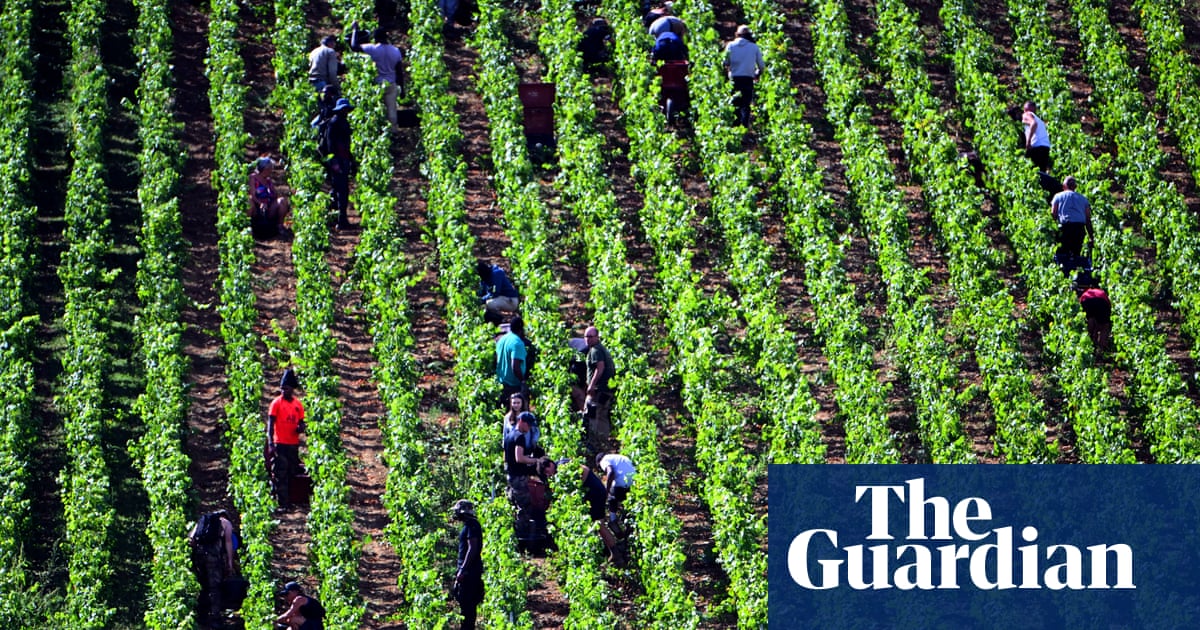PROTECT YOUR DNA WITH QUANTUM TECHNOLOGY
Orgo-Life the new way to the future Advertising by AdpathwayThe Albanese government has greenlit a contentious windfarm proposed for Robbins Island off north-western Tasmania, promising to impose conditions to protect threatened bird species, including the critically endangered orange-bellied parrot.
The environment minister, Murray Watt, announced on Friday that he had approved an application by the renewable energy company Acen Australia to build up to 100 turbines, a 1.2km bridge between the nearly 10,000-hectare island and the Tasmanian mainland, a 500-metre wharf and four quarries.
Watt acknowledged the decision would be divisive but said “the reality is we need more renewable energy being built in Australia to tackle the climate change challenge that we have”. He said putting in place “strong environmental protections to avoid and reduce environmental damage” was key.
“That’s what I believe we’ve done [here],” he said.
Watt said his approval came with strict conditions to protect several species that conservationists and scientists say are at risk from the development, including the orange-bellied parrot, Tasmanian wedge-tailed eagle, Tasmanian devil and several protected migratory shorebirds.
Many of these conditions relate to the parrot, which has a wild population of fewer than 100 and is the focus of an intensive government-funded recovery effort. The conditions include a requirement that Acen conduct comprehensive parrot surveys for three years before construction can begin.
The approval decision, eight years after the development was first proposed, was welcomed by the Tasmanian Liberal government and Labor opposition, as well as the state’s chamber of commerce and industry. Acen Australia’s managing director, David Pollington, called it a “major step in unlocking one of the largest private investments in Tasmania’s history and positioning the state as a major player in Australia’s clean energy transition”.
But the announcement was sharply criticised by environment organisation the Bob Brown Foundation, which said the farm would be “wildlife killing” and accused the company of failing to carry out adequate bird surveys. Birdlife Australia has previously called for the windfarm to be blocked and for Robbins Island to be declared a “no-go site”, calling it the most important site for shorebirds in Tasmania.
Some migratory shorebird populations are estimated to have fallen by more than 70% since late last century.
Christine Milne, a former Greens leader and a patron with the Bob Brown Foundation, said allowing a windfarm to be built at the southern end of the East Asian-Australasian Flyway for migratory birds was a “huge assault on nature and on rare birds”. She said the decision was “devastating for threatened species, for the environment, for the north of Tasmania”.
“Of course we need to have renewable energy, but every project should be assessed on its merits, not just flicked through on the basis that we’re going to fast-track renewable energy,” she said. “Biodiversity and climate are two sides of the same coin and it is not a climate-plus to destroy threatened species.”
The Greens also condemned Watt’s decision. Tasmanian Greens MP Vica Bayley said: “Scientists and community representatives have long-raised concerns about the damage a windfarm would do to the native wildlife of the area, but they’ve been consistently ignored, and again dismissed today.”
Watt said the 900MW development – which includes the 720MW Robbins Island farm and an already approved 180MW farm at nearby Jims Plain – had the potential to cut greenhouse gas emissions by 3.4m tonnes a year, equivalent to taking more than 1m cars off the road.
after newsletter promotion
He said conditions on the project included that Acen develop and implement a bird and bat management plan to “evaluate, mitigate and manage the risk of turbine collision for threatened birds”. He said this plan might need to include “curtailment or shutdown of all or some turbines” at certain times.
Watt said Acen would also need to provide funding for an orange-bellied parrot conservation program, install barriers to avoid Tasmanian devils from the mainland crossing to the island and potentially affecting the local disease-free population, and protect 1,164 hectares of devils’ habitat on the island. Acen could not build turbines within 1km of a wedge-tailed eagle nest, he said.
The company still needs separate approval for a 120km transmission line through forest and farms needed to connect the windfarm to the power grid.
Robbins Island has been owned by the Hammond family, who use it to run Wagyu cattle, since the 1960s. It includes wetlands, heathland and woodlands, unusual geology, paddocks and pristine beaches.
A windfarm has been proposed for the site since early this century. The current proposal appeared to have been effectively blocked in 2022, when the Tasmanian Environment Protection Authority said it could operate for only seven months each year and must shut during orange-bellied parrots’ migration season. But the EPA ruling was overturned on appeal.
A counter-appeal against the project by the community group Circular Head Coastal Awareness Network lost in the supreme court.


 1 day ago
12
1 day ago
12





















 English (US) ·
English (US) ·  French (CA) ·
French (CA) ·